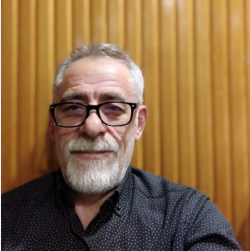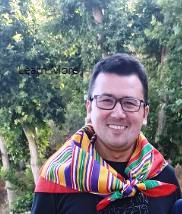“Hayatın en önemli dönemi üniversite çalışmaları değil, doğumdan altı yaşa kadar olan süredir. Çünkü bu, bir çocuğun gelecekte olacağı yetişkini inşa ettiği dönemdir. Sadece zekâ değil, insanın bütün mümkün becerileri bu dönemde oluşur. Hiçbir çocuk zekice bir yardıma, bu dönemde olduğu kadar ihtiyaç duymaz.” (Dr. Maria Montessori)
Söz konusu çocuk eğitimi olduğunda beş doksan beşten büyüktür.
İnsan yüz yaşına kadar yaşasa dahi hayatını şekillendirmesi açısından ilk beş yıl sonraki doksan beş yıldan daha önemli ve değerlidir.
Anne karnında başlayan 24 ay annenin yakınlığı, emzirmesi, anne/babanın bol yakın temasla sevgiye, merhamete ve şefkate doyurması ile tamamlanan ilk üç yıllık evdeki anne/baba okulunun devamı 3-7 anaokulları ile devam ettirilmelidir.
Zira insanı bir ömür boyu yönlendiren “kişilik” bu dönemde en az %70 itibariyle şekillenir.
Milli eğitim müfredatı hazırlanırken bu ilkeye dikkat edilmesi hayati önemdedir.
Eğitim için tahsis edilen kaynağın en az üçte birinin anaokulu dönemine tahsisi ülkenin kaderini değiştirecektir.
Anaokulundan sonraki dönemlerde de bütün liseleri tedrici olarak meslek lisesine dönüştürülmelidir.
Böylece eğitim sistemi her çocuğa 18 yaşına geldiğinde koluna bir altın bilezik takmalı onu kabiliyetli olduğu alanda sanatkâr yapmalıdır.
Bol uygulamanın olduğu teorisi verilen her bilginin uygulama ile çıraklık ve kalfalık dönemlerinin öğretmenlerinin rehberliğinde ve takibinde alanda tamamlanması sağlanmalıdır.
Nüfusa bize yakın olan Almanya’da üç milyon civarında üniversite öğrencisi varken bizde bu rakamın sekiz milyonlara ulaşması üzerinde dikkatle durulması gereken bir husustur.
3-7 yaş dönemini kapsayan herkesin ulaşabildiği yaygın anaokulları, o okulların lisans+yüksek lisans ve bol uygulamayla yetişmiş öğretmenleri ve esnek ve dünyadaki başarılı örnekleri kendi değerlerimize uyarlanmış bir müfredat eğitim sisteminin temel üç dinamiği olmalıdır.
Kindergarten or University? (For Curriculum)
“The most important period of life is not university studies, but the period from birth to age six. Because this is the period when a child builds the adult he will become in the future. Not only intelligence, but all possible skills of a person are formed in this period. “No child needs intelligent help more than he does at this time.” (Dr. Maria Montessori)
When it comes to child education, five is greater than ninety-five.
Even if a person lives to be one hundred years old, the first five years are more important and valuable than the next ninety-five years in terms of shaping his life.
The first three years of the mother/father school at home, which begins in the womb with 24 months of closeness of the mother, breastfeeding, and the mother/father's saturation with love, mercy and compassion through abundant close contact, should be continued with kindergartens 3-7.
Because the "personality" that guides a person throughout life is shaped by at least 70% in this period.
It is vital to pay attention to this principle while preparing the national education curriculum.
Allocating at least one third of the resources allocated for education to the kindergarten period will change the fate of the country.
All high schools after kindergarten should be gradually converted into vocational high schools.
Thus, the education system should put a gold bracelet on every child's arm when he turns 18 and make him an artist in the field he is talented in.
It should be ensured that all knowledge given the theory that it has plenty of application is completed in the field under the guidance and follow-up of teachers during the apprenticeship and journeyman periods.
While there are around three million university students in Germany, which has a similar population to ours, this figure has reached eight million in our country, which is an issue that needs to be carefully considered.
Mainstream kindergartens that are accessible to everyone between the ages of 3-7, teachers of those schools with undergraduate and graduate degrees and plenty of practice, and a curriculum that is flexible and adapted to our own values, with successful examples from around the world, should be the three basic dynamics of the education system.



























